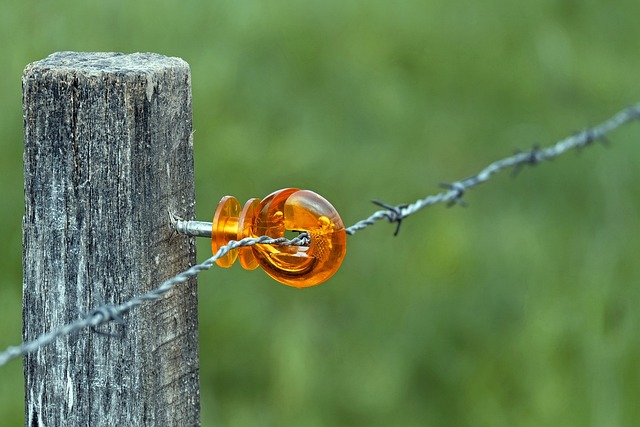Fences serve not only as structural elements but also as artistic statements, enhancing your outdoor space. Proper fence staining and sealing are crucial steps in preserving the beauty and durability of your wooden fence. This comprehensive guide delves into the intricacies of fence staining, from understanding its benefits and choosing the right type to preparing your fence, selecting the perfect color, and mastering the sealing process. Learn how to avoid common mistakes and maintain your fence’s stunning appearance for years to come.
- Understanding Fence Staining: Benefits and Types
- Preparing Your Wooden Fence for Staining
- Choosing the Right Stain: Color and Formula
- The Sealing Process: Protecting Your Fence
- Common Mistakes to Avoid During Staining
- Maintenance Tips for Long-Lasting Fence Appearance
Understanding Fence Staining: Benefits and Types
Fence staining is an art that involves enhancing the beauty and durability of wooden fences. It’s not just about applying paint; it’s a process that prepares and protects the fence while adding a touch of aesthetics. The primary benefits include increased visual appeal, improved resistance to weather conditions, and extended lifespan of the wood.
There are various types of fence staining options available, each serving unique purposes. Some stains offer a natural look by enhancing the wood’s grain, while others provide a vibrant color transformation. Water-based stains are popular for their low odor and quick drying time, making them user-friendly. On the other hand, oil-based stains penetrate deeper into the wood, offering superior protection against elements like UV rays and moisture.
Preparing Your Wooden Fence for Staining
Before applying any stain or sealer, it’s crucial to prepare your wooden fence properly. Start by cleaning the fence thoroughly using a pressure washer or a brush and soapy water. This step eliminates dirt, dust, and any loose debris on the surface of the wood. Once cleaned, repair any damaged sections using suitable wood putty or filler, and sand the fence gently to ensure an even finish.
Next, consider scraping off any old paint or stain with a scraper or sandpaper, especially if the fence has undergone previous treatments. This process helps create a fresh surface for the new stain to adhere to effectively. Ensure all debris is removed, and the wood is dry before proceeding to the staining stage.
Choosing the Right Stain: Color and Formula
When it comes to enhancing your wooden fence, selecting the perfect stain is a crucial first step. The right stain will not only bring out the beauty of the wood but also protect it from the elements. Color choice is subjective and depends on personal preference, whether you prefer natural tones or bold, vibrant shades. However, consider the ambiance you want to create in your outdoor space, as darker colors can make a fence appear more formal and sophisticated while lighter hues offer a casual and inviting atmosphere.
Additionally, pay close attention to the formula of the stain. Water-based stains are popular for their low odor and ease of application, while oil-based formulas provide deeper penetration and longer-lasting protection against moisture and UV rays. Always read the product instructions and ensure the stain is suitable for exterior use and compatible with your fence material.
The Sealing Process: Protecting Your Fence
The sealing process plays a pivotal role in protecting your wooden fence from the elements, ensuring its longevity and maintaining its aesthetic appeal. After staining, applying a high-quality sealant acts as a protective barrier against water, UV rays, and extreme temperatures—common culprits behind wood degradation. Sealants can be oil-based or water-based, each with its own advantages; oil-based options offer deeper penetration and richer color retention, while water-based sealants are more environmentally friendly and often easier to apply.
During the sealing process, the sealant fills in pores and cracks, preventing moisture from seeping into the wood’s fibers. This not only prevents rot but also slows down the drying process of the stain beneath, ensuring its integrity. Regular sealing, typically every one to two years, is crucial for preserving your fence; it shields against fading, peeling, and warping, keeping your wooden fence looking fresh and new for years to come.
Common Mistakes to Avoid During Staining
When staining your wooden fence, there are several common mistakes to steer clear of to ensure a professional and long-lasting finish. One of the most frequent errors is failing to properly prepare the fence surface. This includes not sanding rough or splintered wood, which can lead to an uneven stain application. Additionally, skipping the cleaning process will result in the new stain absorbing into old, existing treatments, causing blotching and an inconsistent appearance.
Another blunder to avoid is selecting the wrong type of stain for your fence’s needs. Different stains offer varying levels of protection against fading, weathering, and UV damage. Using a product unsuitable for exterior wood can lead to premature fading and a shorter lifespan for your fence. Always choose a high-quality stain designed specifically for outdoor use, and consider factors like your climate, the sun exposure of the fence, and desired color outcome before making a selection.
Maintenance Tips for Long-Lasting Fence Appearance
Regular maintenance is key to preserving the vibrant, long-lasting color and finish of your stained fence. Begin by cleaning the fence surface annually to remove any built-up dirt or debris using a soft brush and mild detergent. This ensures that the stain adheres properly during reapplication.
Protect your fence from harsh weather conditions by sealing it every 2-3 years. Apply a high-quality sealant designed for wood to create a protective barrier against water, UV rays, and extreme temperatures. This simple step will significantly extend the life of your fence’s finish and maintain its aesthetic appeal.
